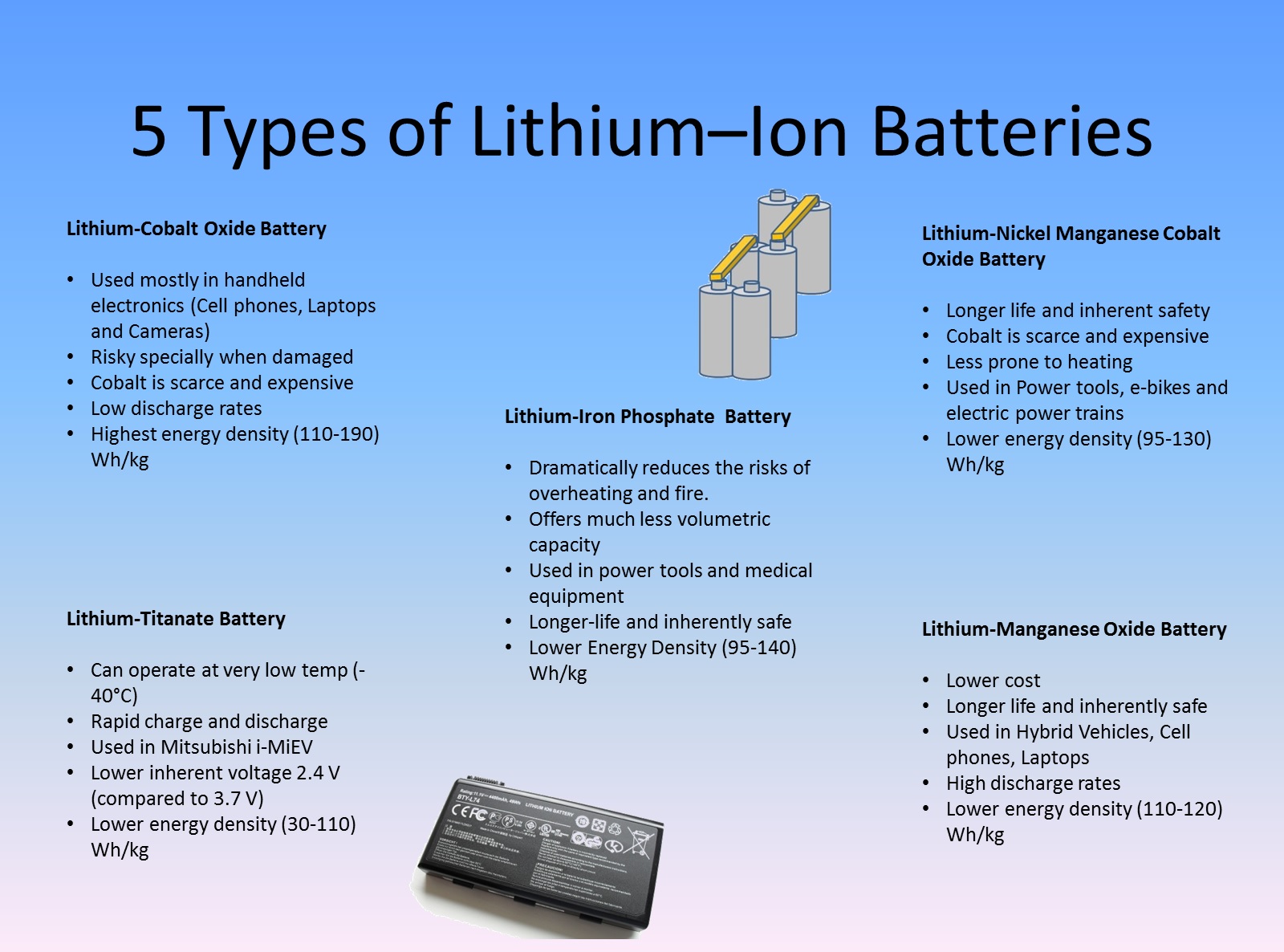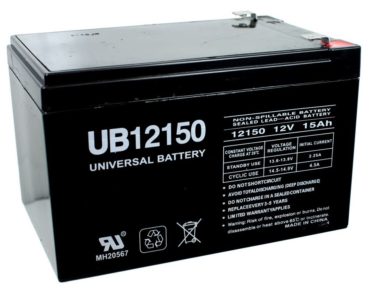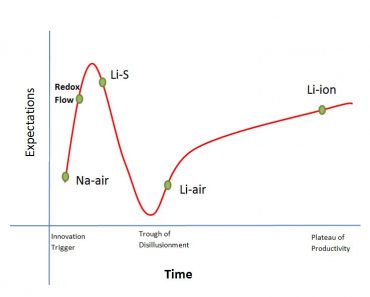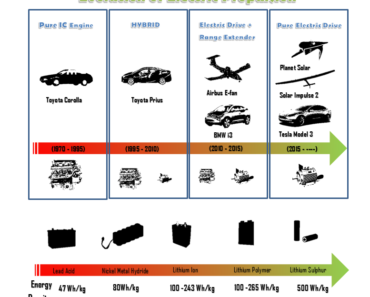Contents
Battery technology nowadays is witnessing much needed research activity. It was recognized by US Advanced Battery Consortium more than a decade ago that for electric cars to be competitive, the battery technology needs to be improved substantially. Many a times it has been mentioned that a feasible and efficient battery-pack is the holy grail to electric car invasion. Improvements are needed right from atomic scale, cell scale to module and system scale. Today research across the globe is pushing the technology forwards at a much higher pace compared to last decade.
It should be noted that price to travel a mile in an electric car can be as low as 2 cents, whereas an efficient smaller engine petrol car manages 12 cents. Thus putting aside the issues related to battery pack development, the running cost of electric cars can be 5 times cheaper compared to their IC engine counterparts.
The battery-pack performance therefore is the key in overtaking long established IC engine technology. It has to be mentioned that sincere efforts in the last two decades could have seen the technology propelled much further than it is today. The half-hearted efforts if not disingenuous effort have been well captured in the documentary, “Who killed the Electric car” (by Sony pictures classics).
The seven challenges faced by the Battery Industry are as follows:
-
Cost
In 2001, the US Advanced battery consortium set a goal of $125 per kilowatt hour for a battery pack system by the year 2020 for electric cars to be competitive. In 2010, the Nissan Leaf battery pack was sold at a price of $18,000 [1]. Nissan’s initial battery pack was sold at about $750 per kilowatt hour. The battery pack itself exceeded the production costs for the first two years. The price since has dropped substantially. The replacement batteries for the Leaf are available today for $ 5500 with $500 installation cost. Thus the cost is down to $ 250/ Kwh.
The cost of Li-ion is high mainly because of the economy of scales. Lithium-ion batteries used in cars are a fraction of the Lead-Acid batteries. Furthermore, with-in the Li-ion batteries umbrella, there are multiple battery chemistries, each with its own unique manufacturing technique and packaging requirement. These wide ranging options divide the scale of manufacture.
Today the option of leasing the battery pack by paying a monthly fee instead of outright buying it, helps in spreading the cost. As case in point is Renault Zoe. The leasing option for the battery-pack drops the cost down to $171 per kilowatt.
The high cost of battery-pack is still the biggest impediment in the popularity of electric cars. However, it is dropping at an appreciable rate and it is expected that in the next 5 years, it will not only meet the target set by USABC, but even surpass it.
-
Life
Battery life of the vehicles being rolled out today is about 5 years. Most EV car manufacturers provide the option for battery replacement after every 5 years. All batteries tend to degrade with time, losing their storage capacity in the process. There is a shelf life of the battery regardless of its use because of irreversible internal chemical decomposition. The rate of this decay can be reduced but comes at a price of compromising other performance factors.
USABC has recommended that the calendar-life of the batteries has to be 15 years so that they last the life of the car. Although improvement in battery chemistry has improved the shelf life, but it is still a long away from a 10 years lifespan let alone 15.
-
Range
The range anxiety is an issue that still haunts electric cars. Although with the emergence of charging point at numerous locations, the infrastructure has become more suitable for pure electric transport in the last five years. Infrastructure enjoyed by IC engine cars has seen over a century of development.
A well designed electric car (low weight and coefficient of drag) can deliver up to 5 miles per kWh. The option of regenerative braking also makes the range go further. However at highway speeds, electric cars performance degrades rapidly when high power is drawn by the motor. This is because energy is lost as heat during discharge from the battery increases and so does drag force. Most electric cars manufacturers therefore have resorted to producing city cars (i.e. that have max speed limit under 60 mph).
Although the high end Tesla Models S claims a range of 208 on optimal driving condition but most electric cars present in the market today have range between 60 – 100 miles. More details Electric cars in UK
-
Energy density Vs Power density
Depending upon the way the cells are manufactured, a cell designer has to choose between a high Power density or high energy density. In simple words, the space inside the battery can either be used to store more energy or place channels to draw it out.
The energy density is of two different types, volumetric energy density and energy density by mass. Higher values of both are desirable as it would equate to lesser space and weight. If there is significant improvement in both types of energy densities than the range issue can be taken out of the equation.
Performance cars on the other hand require more power density. As mentioned before, cramming more energy inside the battery makes it harder to get it out at a faster rate. Hence cars like McLaren P1 have a small range (when running on pure electric drive). Lithium- Ion battery technology enjoys the highest energy density, which is 5 times more that lead acid battery.
Energy density of the Solar impulse aircraft is among the highest i.e. 220 Wh/kg
-
Charging Time
Charging time is another factor that can put-off a lot of customers. Fast charging and overcharging of the battery can cause exothermic reaction inside the cell. The charging time in some electric cars could be as long as 8-hours. There has been significant improvement in this regards and thanks to advancement in super-charging technology. The batteries can now be charged in a matter of minutes. There has been multi-pronged strategy to address the issue. One of them involves replacing a standard size battery pack with a charged one. Other strategies have looked at induction charging on the road while on the go.
-
Battery Thermal Management
Cooling of batteries is a significant area when designing the battery pack. Battery cells behave optimally if they are maintained within a temperature range of +20° C to +30° C. Higher or lower temperature can lead to degradation in performance. In many places temperatures can reach above 45 °C during summer and -35 °C during winter. At such extreme temperatures, the cells need to be protected as the battery performance may be seriously impaired.
| Battery Type | Operating Temperature °C |
| Lead Acid | 0 -55 °C |
| NiMH | -10- 40 °C |
| Li-ion | -20 -60 °C |
The cells also have variable temperature across the body. It has been recommended that the temperature difference between the highest and the lowest temperature within a cell should not exceed 2-3°C. For the battery pack (collection of cells), the difference between the hottest and coolest cell should not exceed 8°C.
| Acceptable Temperature Variation in module |
| 2-3 °C in Small Modules |
| 6-7 °C in Large Modules |
| Acceptable Temperature Variation in Packs |
| 2-3 °C in Small Modules |
| 7-8 °C in Large Modules |
The pack power capability is affected significantly by temperatures of the cells within the pack. In low temperature conditions, the pack power capability is limited by the coolest cell. On the other hand when operated at elevated temperature, the pack safety and thus the maximum allowed pack power are determined by the hottest cell.
The cooling of battery pack in extremely hot conditions by means of a cooling/refrigerating device, leads to quick depletion of energy stored inside the pack, therefore compromising the range.
-
Retrofitting
Most car manufacturers till now have reluctantly entered in the EV market. Many of them like to design an EV using the chassis and the body of their existing models that were based on IC engine.
The space requirement and the weight distribution in such cases is not ideal which limits the battery pack design and in turn range and performance of the car. This line of thinking has to be dropped. The cars that have had success in the EV industry (Nissan Leaf, Tesla model S and BMW i-3) are the one that were purpose built for Electric drive. Therefore a bottom up approach helps in designing a better battery pack at in turn enhances the car performance.
References
- “Nissan Leaf profitable by year three; battery cost closer to $18,000”. AutoblogGreen. 2010-05-15. Retrieved 2010-05-15.








Thnks for sharing knowledge about electric vehicles and Lithium ion Batteries. Would like to know more and wish to connect with you to gain more knowledge about EV’s.
Regards